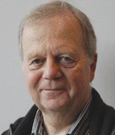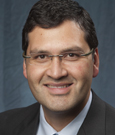Multiple myeloma researchers moved the field forward at the 2013 American Society of Hematology (ASH) Annual Meeting, presenting evaluations of treatment schedules and reports of encouraging activity with compounds in development.
Alternating vs Sequential Regimens
In 231 newly diagnosed elderly patients, Spanish investigators evaluated sequential vs alternating use of VMP (bortezomib [Velcade], melphalan, and prednisone) and Rd (lenalidomide [Revlimid] plus low-dose dexamethasone) in the GEM2010MAS65 trial.1 The sequential treatment scheme was nine consecutive cycles of VMP followed by nine consecutive cycles of Rd. Patients treated with the alternating scheme either started with one cycle of VMP and alternated with one cycle of Rd, or started with one cycle of Rd and alternated with one cycle of VMP, each for up to 18 cycles.
After 9 months of treatment, response rates were higher for the alternating scheme (93% vs 89% with sequential treatment), and the proportion of patients achieving a very good partial response or greater was 78% vs 56%, respectively (P = .004). At 20 months, the alternating group also had numerical improvements in progression-free survival (84% vs 80%) and overall survival (92% vs 88%), but the differences were not statistically significant, according to Maria-Victoria Mateos, MD, PhD, of the University Hospital of Salamanca, Spain.
The study also established the benefit of achieving a stringent complete response or complete response. In this group, progression-free survival was 96% in the alternating arm and 92% in the sequential arm, which was significantly better than those with less than a very good partial response, whose progression-free survival rates at 20 months were 78% and 62%, respectively.
“After nine induction cycles, the alternating scheme is superior in efficacy, especially in terms of stringent complete responses and complete responses, as compared with the sequential scheme, and with no more additional toxicity,” she concluded. “The benefit of these combinations seems to be consistent in different risk groups, especially in patients with high-risk cytogenetic abnormalities.” She suggested evaluating the final benefit of these two approaches as incorporated into a total therapeutic approach in the elderly.
Doublets as Good as Triplets
In a community-based population, triplet alkylating combinations did not lead to improved progression-free survival or overall survival benefits over doublet therapy, Antonio Palumbo, MD, of the University of Torino in Italy reported at the ASH meeting.
The study compared Rd (lenalidomide plus low-dose dexamethasone, n = 211) vs the alkylating-based regimens MPR (melphalan, prednisone, lenalidomide, n = 210) and CPR (cyclophosphamide, prednisone, lenalidomide, n = 220) in elderly, transplant-ineligible, newly diagnosed myeloma patients. After a median of nine cycles, all patients received maintenance lenalidomide until disease progression.
A partial response or better was achieved by 74% of the Rd group, 73% of the MPR group, and 72% of the CPR group. At a median follow-up of 26 months, progression-free survival was 22 months, 27 months, and 24 months, respectively, and overall survival was 80%, 81%, and 84%. None of the differences were statistically significant, Dr. Palumbo reported.
MPR was associated with significantly more neutropenia (P < .0001), thrombocytopenia (P < .003), and anemia (P < .0001), and required significantly more dose reductions (P < .0001) than the other regimens.
Differences in subsets of patients led Dr. Palumbo to conclude that CPR may be a good regimen for fit patients, Rd may be good for unfit patients, and a lower-dose regimen of lenalidomide at 15 mg plus dexamethasone at 10 mg may be best for frail patients.
Ixazomib Citrate
In newly diagnosed patients, the oral proteasome inhibitor ixazomib citrate (formerly known as MLN9708) combined with lenalidomide and dexamethasone, led to high response rates and increased depth of response with extended treatment duration, Paul G. Richardson, MD, of Dana-Farber Cancer Institute, Boston, reported at the meeting.3
“To date, this is the first all-oral combination of a proteasome inhibitor with an immunomodulatory drug under investigation in this setting, and the data strongly support the feasibility and activity of this combination in newly diagnosed patients,” Dr. Richardson said.
Ixazomib was given twice weekly with lenalidomide/dexamethasone to 71 treatment-naive patients, mostly at a dose of 3.0 mg. Patients received up to 16 cycles of the triplet.
The overall response rate was 94%, and the rate of complete response plus very good partial response was 76%. A stringent complete response was reached in 75% of complete responders. Responses appeared to deepen over the course of treatment, with 93% of patients responding after 4 cycles (at least a very good partial response in 61%) and 95% responding after both 8 and 16 cycles (at least a very good partial response in 71%).
Drug-related serious adverse events were seen in 28% of patients, grade 3 drug-related adverse events were reported in 58%, and there were no grade 4 events.
The investigators concluded, “These data suggest that twice-weekly oral ixazomib plus [lenalidomide/dexamethasone] is feasible and active in patients with newly diagnosed [multiple myeloma]. However, rates of rash, [peripheral neuropathy], and dose reductions appear higher than in the parallel study using weekly ixazomib, with similar response rates and better convenience, supporting use of weekly dosing in ongoing phase III trials.”
Panobinostat Trials
Dr. Richardson also presented an updated analysis of the phase II PANORAMA 2 trial of the oral histone deacetylase inhibitor panobinostat paired with bortezomib and dexamethasone in 55 patients with relapsed and bortezomib-refractory disease.4 Patients showing clinical benefit by eight cycles continued on treatment. The median duration of exposure was about 5 months.
The objective response rate was 35% (with very good partial responses in 5.5%), and the clinical benefit rate was 53%, with a median duration of response of 6 months. High-risk cytogenetics did not negatively impact response rates; in this subset, the response rate was 42.9% and the clinical benefit rate was 71.4%. For all patients, median progression-free survival was 5.4 months and median overall survival was 17.5 months.
“These results, and those from the recently completed phase III trial of panobinostat, bortezomib, and dexamethasone in relapsed/refractory myeloma (PANORAMA 1), will better elucidate the role of this combination,” he said. “In particular, the announcement at the meeting that the PANORAMA 1 trial had met its primary endpoint with a highly significant improvement in progression-free survival is especially encouraging, and we await further results from this study with great interest.”
Another multicenter dose-finding phase II study evaluated panobinostat in combination with the proteasome inhibitor carfilzomib (Kyprolis) in 44 patients with relapsed/refractory myeloma.5 Median progression-free survival was 6.8 months, the 12-month progression-free survival rate was 41%, the 12-month overall survival rate was 85%, overall response rate was 64%, and clinical benefit rate was 76%.
“The combination of panobinostat and carfilzomib is feasible and effective in the relapsed or relapsed/refractory population, and prior exposure to proteasome inhibitors or [immunomodulatory drugs] does not seem to affect the response rate or overall survival of patients on this combination,” according to Jesus G. Berdeja, MD, of Sarah Cannon Research Institute, Nashville.
Other Emerging Agents
Several monoclonal antibodies are in various stages of development in myeloma. One that targets CD38, daratumumab, is considered promising and received Breakthrough Therapy designation from the U.S. Food and Drug Administration in 2013.
Torben Plesner, MD, of Vejle Hospital in Denmark, presented data on 11 patients who relapsed after at least two prior lines of therapy.6 Eight achieved at least a partial response after treatment with daratumumab (up to 16 mg/kg), in combination with lenalidomide and dexamethasone, including complete responses in three and very good partial responses in two. No patients had disease progression, and the treatment was well tolerated. Thus, the previously reported finding of single-agent activity and tolerability of daratumumab for relapsed or relapsed/refractory myeloma (ASH 2012) has now been extended to the combination of daratumumab with lenalidomide and dexamethasone.
A new class of agents that target the kinesin spindle protein is also being tested in myeloma. One such kinesin spindle protein inhibitor is filanesib (ARRY-520). Mature data from a phase II trial of this agent in 87 heavily pretreated patients (median, 6 prior therapies) found response rates to be 16% for the single agent, and 15% for filanesib plus dexamethasone, which was administered to patients who were dual-refractory to both bortezomib and lenalidomide, reported Jonathan Kaufman, MD, of Emory University’s Winship Cancer Insitute, Atlanta.7
In addition, the retrospective use of AAG (acute phase protein alpha-1-acidic glycoprotein) levels as a biomarker improved predictive outcomes. In patients with low AAG levels, the response rate was 24% for single-agent filanesib and 19% for filanesib plus dexamethasone in dual-refractory patients. The median overall survival in AAG-low patients receiving the single agent was 23.3 months, and was 11 months in dual-refractory patients with low AAG levels, compared to 4.5 months and 2.9 months, respectively, for patients with high AAG levels in these treatment arms.
Disclosure: Dr. Mateos has received honoraria from Janssen, Onyx, Millennium, Novartis, and Celgene. Dr. Palumbo is a consultant for and has received honoraria from Amgen, Bristol-Myers Squibb, Celgene, Janssen, Millennium, and Onyx. Dr. Richardson is an advisor for Millennium, the Takeda Oncology Company, Celgene, and Johnson & Johnson. Dr. Berdeja reported no potential conflicts of interest. Dr. Plesner has been a consultant for Genmab and a member of advisory committees for Janssen and Celgene. Dr. Kaufman has been a consultant for Onyx, Novartis, Janssen, and Millennium, and has received research funding from Celgene, Novartis, and Merck. ■
References
1. Mateos M-V, Martinez-Lopez J, Hernandez M, et al: Comparison of sequential vs. alternating administration of bortezomib, melphalan and prednisone and lenalidomide plus dexamethasone in elderly patients with newly diagnosed multiple myeloma patients: GEM2010MAS65 Trial. 2013 ASH Annual Meeting. Abstract 403. Presented December 9, 2013.
2. Palumbo A, Magarotto V, Bringhen S, et al: A randomized phase 3 trial of melphalan-lenalidomide-prednisone (MPR) or cyhclophosphamide-prednisone-lenalidomide (CPR) vs lenalidomide plus dexamethasone (Rd) in elderly newly diagnosed multiple myeloma patients. 2013 ASH Annual Meeting. Abstract 536. Presented December 9, 2013.
3. Richardson PG, Hofmeister C, Rosenbaum C, et al: Twice-weekly oral MLN9708 (ixazomib citrate), an investigational proteasome inhibitor, in combination with lenalidomide and dexamethasone in patients with newly diagnosed multiple myeloma: Final phase 1 results and phase 2 data. 2013 ASH Annual Meeting. Abstract 535. Presented December 9, 2013
4. Richardson PG, Schlossman R, Alsina M, et al: Time to event analyses in PANORAMA 2: A phase 2 study of panobinostat, bortezomib, and dexamethasone in patients with relapsed and bortezomib-refractory multiple myeloma. 2013 ASH Annual Meeting. Abstract 1970. Presented December 7, 2013.
5. Berdeja J, Savona M, Mace J, et al: A single-arm, open-label, multicenter phase I/II study of the combination of panobinostat and carfilzomib in patients with relapsed or relapse/refractory multiple myeloma. 2013 ASH Annual Meeting. Abstract 1937. Presented December 7, 2013.
6. Plesner T, Arkenau T, Lokhorst H, et al: Preliminary safety and efficacy data of daratumumab in combination with lenalidomide and dexamethasone in relapsed or refractory multiple myeloma. 2013 ASH Annual Meeting. Abstract 1986. Presented December 7, 2013.
7. Lonial S, Shah JJ, Zonder J, et al: Prolonged survival and improved response rates with ARRY-520 in relapsed/refractory multiple myeloma patients with low α-1 acid glycoprotein levels: Results from a phase 2 study. 2013 ASH Annual Meeting. Abstract 285. Presented December 9, 2013.







